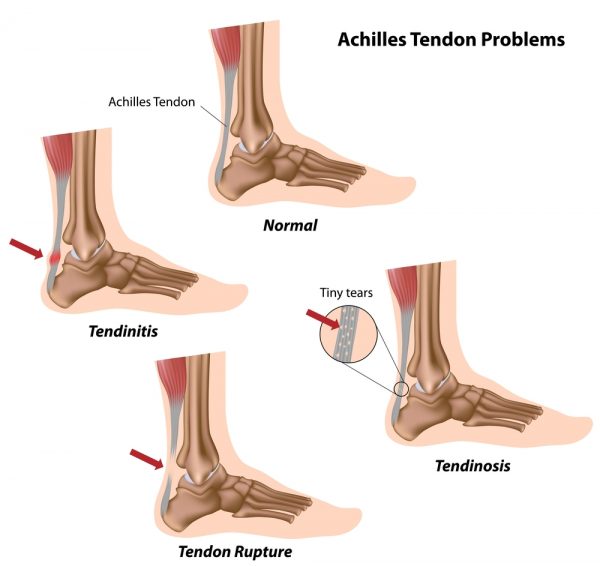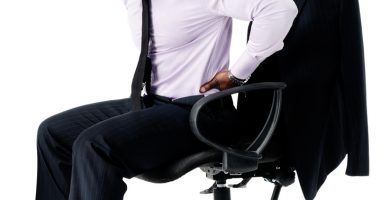Achilles Problems
The achilles tendon connects the calf muscle to the heel bone and this allows us to go up on to our tip toes and push off when walking or running.
Common achilles problems include:
- Achilles tendonitis – this is inflammation of the tendon.
- Achilles tendinosis – this is when there are tiny micro tears in the tendon, and this is often caused by overuse. Often the term tendinopathy is used, this includes both the inflammation and the micro tears.
- Achilles strain/rupture – the achilles tendon can partially tear or completely tear. When complete rupture occurs, there is a sudden pain and loss of strength & movement and an audible pop may be heard. Rupture often occurs when doing a sudden and forceful movement which applies excessive stress to the tendon, such as sprinting or jumping.
Causes of Achilles problems:
- Lack of flexibility (tight calves)
- Over training or sudden increase in exercise (duration or intensity)
- Inappropriate footwear (shoes with hard heel or poor arches)
Middle aged adults are more likely to suffer with achilles problems, as the tendons become less flexible, more rigid and more susceptible to injury as we age.
Symptoms:
- Swelling around the tendon and ankle
- Stiffness in the achilles in the morning
- Mild or severe pain (pain can be worse after periods of rest, can come on gradually, or may only be felt when you walk or run)
- Loss of strength and movement (varying degrees depending on severity of injury)
Treatment:
- Rest
- Ice
- Painkillers or anti-inflammatories
- Heel lifts (to be worn in both shoes)
- Manual treatment – to help reduce inflammation, reduce muscle tension and to check everything else is functioning properly and that there is no other cause for the achilles problem.
- Stretching calf muscles
- Eccentric exercise programme
- Shockwave Therapy (click on our Shockwave therapy page for further details).
Even with a mild achilles problem it can take weeks to months of rest for the tendon to repair itself. It’s important to be patient and not return too soon to sports and activities that stress the tendon. You can maintain your fitness by doing other sports such as swimming or cycling which place less stress on the achilles tendon.
Prevention: Maintaining good flexibility and strength in the calf muscles should help reduce your risk of suffering with an achilles problem.
Here is a link for advice and management of achilles tendinopathy. It contains pictures of both stretches and strengthening exercises.
http://www.ouh.nhs.uk/oxsport/information/documents/Leaflet_Achilles_A5.pdf
Contact us at the clinic on 728798 if you have any questions, would like to talk with someone about treatment or to book an appointment with us
References
http://orthopedics.about.com/cs/ankleproblems/a/achilles.htm
http://www.nlm.nih.gov/medlineplus/ency/article/001072.htm
http://www.webmd.com/a-to-z-guides/achilles-tendon-problems-topic-overview?page=2



